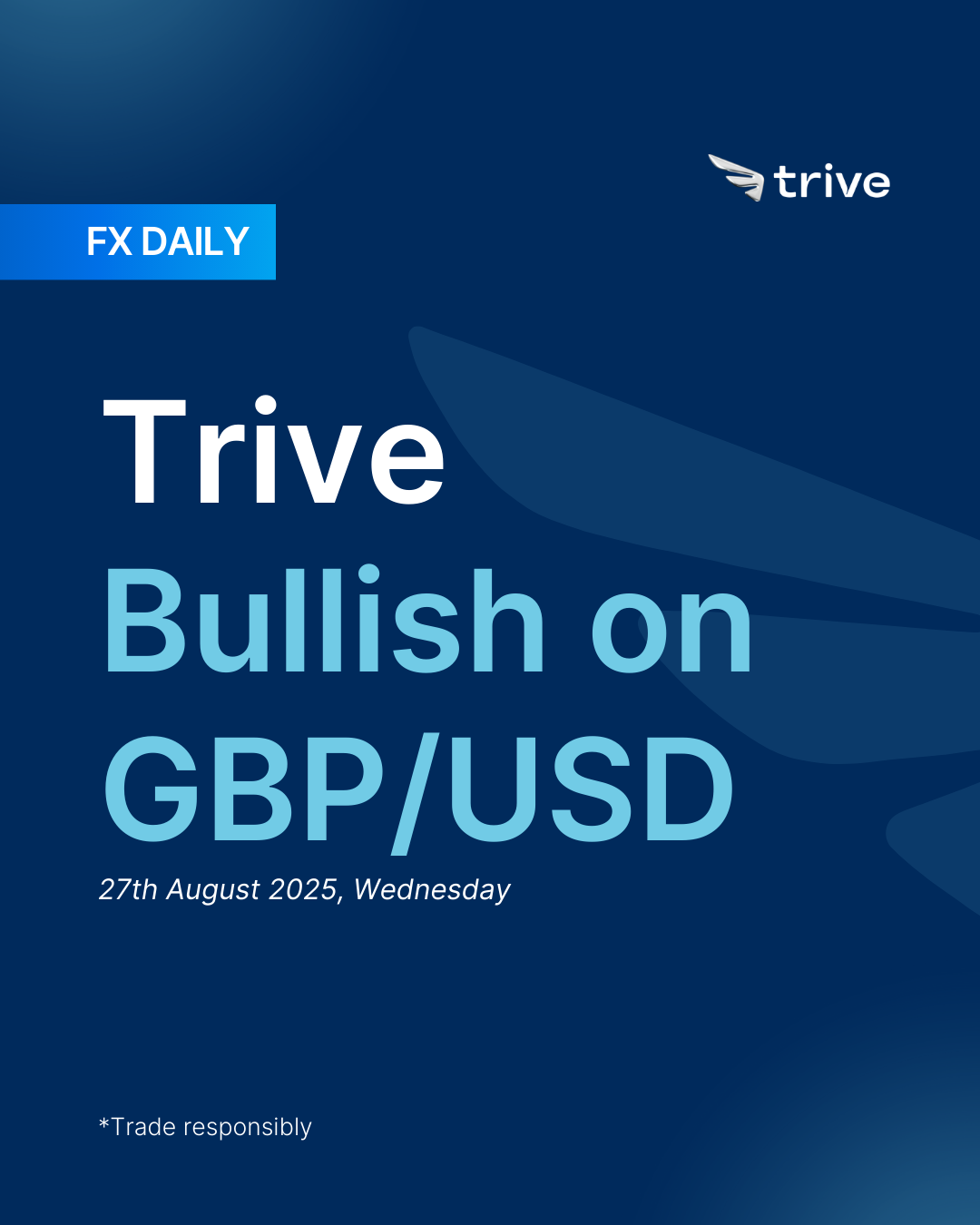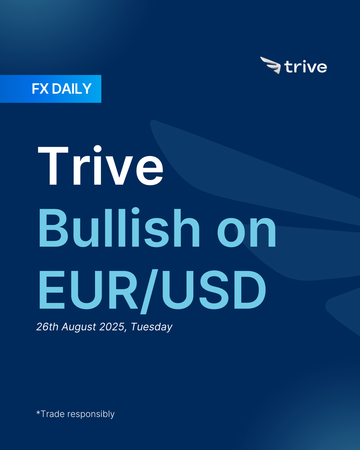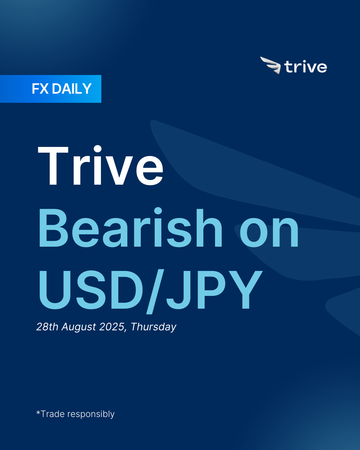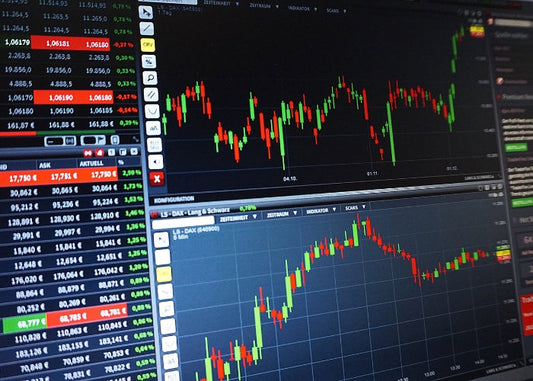FX Daily: Trive Bullish on GBP/USD

Sterling stayed resilient as UK data surprised hawkish — July CPI at 3.8% y/y and services inflation at 5.0% kept BoE cut expectations in check, while PMIs beat forecasts, easing growth concerns. The Pound briefly dipped on hawkish US PMI data but recovered sharply after Powell’s dovish Jackson Hole speech triggered broad USD weakness. Near term, UK resilience and a slower BoE easing path support buy-the-dip strategies in GBP/USD, though direction remains heavily tied to USD swings. Medium term, growth and fiscal headwinds may cap sustained rallies.
GBP: Near term bullish
The British Pound was caught in sharp swings this week, driven first by strong domestic data and later by the US dollar’s dramatic reversal. Sterling began the week trading quietly around the 1.3500 level as markets waited for key UK releases. A powerful boost came on Wednesday when July inflation came in hotter than expected, sending GBP/USD sharply higher as investors pulled back on expectations for Bank of England rate cuts. The momentum did not last. On Thursday, a hawkish US PMI report triggered a surge in the dollar, forcing Cable lower through its 50 and 100-day moving averages and down to a weekly low just above 1.3400. In a complete turnaround, Friday saw all those losses erased. A dovish speech from Fed Chair Powell at Jackson Hole sent the dollar tumbling, sparking a relief rally that pushed Sterling back toward 1.3500. Despite strong UK fundamentals, the Pound ultimately moved in reaction to US monetary policy shifts.
The highlight of the week for domestic data was the July CPI report. Headline inflation rose to 3.8% year-on-year against expectations of 3.7%, while services inflation jumped to 5.0% from 4.7%. The ONS noted that higher airfares were a key factor, but the broad-based rise strengthened the case for the Bank of England to remain cautious on cutting rates. This was a hawkish outcome for Sterling. On Thursday, flash PMI data reinforced the growth outlook, with Services rising to 53.6 compared to 51.8 expected and the Composite index climbing to 53.0, suggesting accelerating UK growth over the summer. Public sector borrowing was also better than forecast, and consumer confidence improved, adding minor positives.
On the policy side, there were no major speeches from Bank of England officials. Governor Bailey is due to appear at Jackson Hole over the weekend. Still, markets adjusted their expectations after the week’s data, now seeing a September rate cut as highly unlikely. Investors increasingly expect the BoE to slow the pace of easing compared to other central banks, which gave the Pound support mid-week.
Geopolitics had little impact on Sterling. UK Prime Minister Starmer attended the Ukraine peace talks in Washington, and the UK announced new sanctions on Russia focused on evasion tactics and crypto networks, but neither influenced the market.
Overall sentiment showed how the Pound’s direction was dictated by the US dollar. UK data initially drove a rally, but Thursday’s sharp selloff had nothing to do with Britain and everything to do with the dollar’s surge on strong US numbers. The recovery on Friday was also not Pound-specific but instead fueled by the dollar’s collapse after Powell’s dovish remarks, which triggered a broader risk-on move that lifted Sterling along with other currencies.
Sterling stayed resilient after the BoE’s hawkish surprise, with the close vote and tougher inflation tone still forcing a rethink on the pace of cuts. That base case held this week: stronger than expected UK data .. July CPI hotter (headline 3.8% y/y, services 5.0%) and firm flash PMIs (Services 53.6, Composite 53.0), eased recession fears and kept the “BoE will ease slower than peers” narrative alive. But the price action also made clear that GBP traded the USD first: a hawkish US PMI spike knocked Cable toward 1.3400, and a dovish Powell at Jackson Hole then flipped the dollar and lifted GBP back toward 1.3500. Domestic support remains, the driver board is shared with the dollar.
Near term, we’re dialing the stance to moderately bullish/range-positive rather than outright bullish. The split vote and inflation risk messaging still argue for supported dips while positioning normalizes, and the week’s hotter CPI and PMIs back that up. But with swings dictated by US policy headlines, we frame it as buy-the-dip rather than chase the break, constructive as long as broader risk stays steady and the dollar softness post-Powell doesn’t unwind.
Looking further out, we keep the weak-bearish lean once the BoE impulse fades. Growth headwinds, the risk of a later-year cut, and fiscal uncertainty still argue for fading strength if global risk softens or the USD re-firms. Overall, modest upside in the coming weeks on UK resiliency and a slower BoE easing path, then a softer tone thereafter as the cyclical and fiscal drags reassert.
The next UK inflation print remains the swing factor. Another firm CPI alongside solid PMIs would validate BoE caution and keep GBP supported. Any cooling that revives cut expectations would likely cap the bounce, especially if US data re-tightens financial conditions again.
USD: Powell confirm cut in September?
The US Dollar went through a week of extreme volatility, caught between strong US economic data and a sharp dovish shift from the Federal Reserve. The DXY began the week on solid ground, climbing toward 98.50 in quiet summer trading as markets waited for the Jackson Hole symposium. Momentum turned hawkish mid-week after the release of the July FOMC minutes, which showed most officials were more worried about inflation than employment risks. This view was reinforced on Thursday when the S&P Global Flash PMI came in much stronger than expected, pointing to faster growth and inflation, which pushed rate hikes back into the picture. The dollar jumped to a weekly high near 98.83 as traders quickly priced out Fed easing.
The narrative, however, was overturned on Friday when Fed Chair Jerome Powell delivered a surprisingly dovish speech at Jackson Hole. He highlighted rising risks to the labor market and played down the inflationary impact of tariffs, signaling that a September rate cut was likely. The dollar collapsed in response, erasing its weekly gains and breaking below 98.00, ending the week near 97.55. This marked a sharp reversal driven by the Fed’s sudden shift from focusing on inflation to prioritizing growth risks.
Economic data played a key role throughout the week. Monday’s NAHB Housing Market Index disappointed, falling to 32.0 instead of the expected 34.0. Tuesday’s numbers were mixed, with Housing Starts beating expectations at 1.428M compared to 1.29M, while Building Permits missed forecasts at 1.354M versus 1.386M, leaving little impact on the dollar. On Thursday, volatility surged as jobless claims rose to 235k and the Philly Fed Index dropped to -0.3 against expectations of 7.0, suggesting weakness. But the S&P Global Flash PMI later that day reversed the mood. The Manufacturing index rose back into expansion at 53.3, while the composite reading climbed to 55.4. The commentary leaned hawkish, pointing to rate hikes rather than cuts, which fueled a rally in the USD.
Central bank events dominated the week. The FOMC minutes released Wednesday revealed that most officials saw inflation risks as greater than labor risks, which initially supported the dollar. On the political side, President Trump added pressure on the Fed by calling for Governor Cook to resign over alleged mortgage fraud, raising questions about central bank independence. On Thursday, Fed officials Schmid and Hammack spoke hawkishly, saying they were in no rush to cut rates and were still focused on high inflation, further lifting the dollar. But on Friday, Powell shifted tone entirely, acknowledging labor market risks and describing tariff-related inflation as short-lived. Markets read this as confirmation of a September rate cut. Expectations changed sharply: after Thursday’s strong PMI and hawkish comments, traders had begun questioning whether two cuts by year-end were still realistic. By Friday, markets fully priced in two 25bps cuts by December, with the probability of a September cut jumping from 72% to over 80%.
Geopolitical developments also influenced the dollar. Early optimism around US, Ukraine, and European peace talks faded after Russia launched one of its most intense drone and missile attacks of the war and halted the Druzhba oil pipeline to Hungary. This disappointment gave the dollar some safe-haven support. Meanwhile, a US-EU trade deal framework was reached, though it had little impact on the currency.
Market sentiment shifted dramatically as well. A mid-week sell-off in big technology stocks hurt overall risk appetite, supporting the dollar. By Thursday, the strong PMI data reinforced a “US strength” story, driving the dollar higher. But Powell’s dovish comments on Friday triggered a risk-on rally, sending equities, particularly small caps, sharply higher and dragging the dollar down as markets leaned into expectations of rate cuts.
We saw a classic push-and-pull week: stronger U.S. activity signals lifted rate expectations mid-week, but a dovish turn from the Fed shifted the focus to growth risks and prospective easing. Geopolitics and shifting risk appetite added safe-haven bursts and reversals. In short, markets whipsawed between “higher for longer” and “cuts are coming,” and the dollar followed that pendulum.
We think the near term balance tilts weak bearish for the USD. With markets leaning toward imminent Fed easing, we expect rallies to be sold unless incoming data compels a material repricing of cuts. Brief, headline driven spikes around labor and inflation releases and Fed communications are likely, with risk on phases pressuring the dollar and any growth scare or geopolitical escalation providing only temporary safe haven support. Our base case is to fade strength while front-end yields edge lower.
Looking out a bit further, we see a gradual, uneven softening in the USD as U.S. rate differentials compress and global growth stabilizes. If the Fed follows through with easing and U.S. exceptionalism normalizes, we believe the dollar enters a “sell the rallies” regime into the medium term. That said, we respect the USD’s haven status, stickier inflation or renewed U.S. outperformance could slow or partially reverse the downtrend. Broadly, we prefer staying tactically flexible but structurally biased to a weaker dollar over a multi-month horizon.

Disclaimer
This material is provided for informational purposes only and does not constitute financial, investment, or other advice. The opinions expressed in this material are those of the author and do not necessarily reflect the views of Trive International. No opinion contained in this material constitutes a recommendation by Trive International or its author regarding any particular investment, transaction, or investment strategy. This material should not be relied upon in making any investment decision.
The information provided does not consider the individual investment objectives, financial situation, or needs of any specific investor. Investors should seek independent financial advice tailored to their individual circumstances before making any investment decisions. Trive International shall not be liable for any loss, damage, or injury arising directly or indirectly from the use of this information or from any action or decision taken as a result of using this material.
Trive International may or may not have a financial interest in the companies or securities mentioned. The value of investments may fluctuate, and investors may not get back the amount they originally invested. Past performance is not indicative of future results.
For more information about Trive International, please visit http://trive.com/int
Additional Information
Investing involves risk, including the potential loss of principal. Diversification and asset allocation strategies do not ensure a profit or guarantee against loss. The content in this material is subject to change without notice and may become outdated or inaccurate over time. Trive International does not undertake any obligation to update the information in this material.
By accessing this material, you acknowledge and agree to the terms of this disclaimer. If you do not agree with these terms, please refrain from using this information.
कोई टिप्पणी नहीं
Home
Trive
TriveHub





0 टिप्पणियाँ